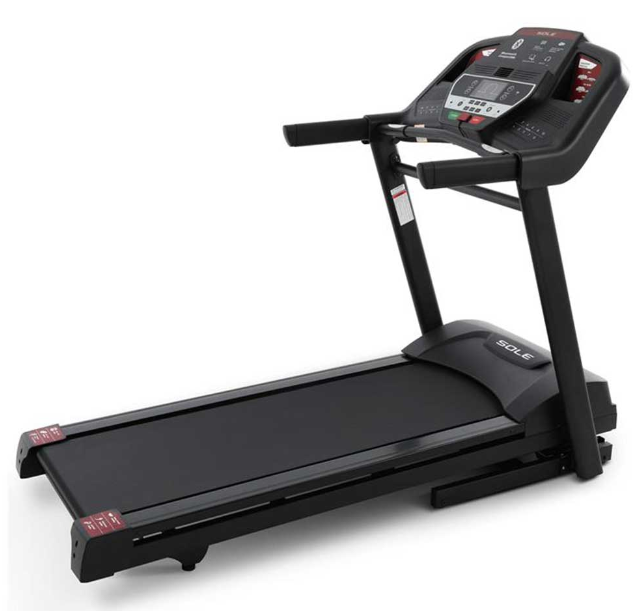One of the most popular and accessible fitness equipment used for indoor exercise is the treadmill. Treadmills offer a convenient way to get your daily dose of cardio and stay active without leaving the comfort of your home or gym. In this comprehensive guide, we will explore what a treadmill is, how it works, its benefits, and its drawbacks to help you make an informed decision about incorporating this equipment into your fitness routine.
What is a Treadmill?
A treadmill is a stationary exercise machine designed for walking, jogging, or running in place. It consists of a moving belt, handlebars, and a console that allows you to control various aspects of your workout, such as speed, incline, and duration. Treadmills are available in various models, from basic manual ones to high-tech, feature-packed machines.
How Does a Treadmill Work?
Treadmills operate on a straightforward principle: the user walks or runs on a moving surface. Here's a breakdown of how a treadmill works:
- The Motor: Most modern treadmills are powered by an electric motor. When you turn the treadmill on and select a speed, the motor rotates the front roller, which, in turn, moves the treadmill belt.
- The Belt: The belt is the surface you walk or run on. It moves in a continuous loop, allowing you to stay in one place while simulating the experience of walking or running outdoors.
- The Deck: Beneath the belt is the treadmill deck, which supports your weight and absorbs the impact of your stride. The deck is usually cushioned to reduce stress on your joints.
- The Console: The console is the control center of the treadmill. It displays important information like your speed, time, distance, and calories burned. You can also adjust settings such as speed and incline using the console.
- Safety Features: Treadmills come equipped with safety features like an emergency stop button and a safety key that clips to your clothing. These features ensure you can stop the machine quickly in case of an emergency.
Benefits of Using a Treadmill
Treadmills offer a wide range of benefits for individuals looking to improve their fitness and overall health. Let's delve into some of the advantages of using a treadmill:
1. Convenience and Accessibility
One of the most significant benefits of owning or using a treadmill is convenience. You can work out at any time, regardless of the weather or time of day. Treadmills are also readily available in gyms, making them accessible to almost everyone.
2. Controlled Environment
Treadmills provide a controlled environment for your workout. You can adjust the speed and incline to suit your fitness level and goals. This control allows for a customized workout experience that is difficult to achieve outdoors.
3. Joint-Friendly
Treadmills with cushioned decks offer a low-impact workout option, reducing the stress on your joints compared to running on hard surfaces like concrete. This makes treadmills suitable for people with joint issues or those recovering from injuries.
4. Versatility
Treadmills can accommodate various fitness goals. You can use them for walking, jogging, or running at different intensities. Some treadmills even offer pre-programmed workouts and heart rate monitoring for added versatility.
5. Effective for Weight Loss
Regular treadmill workouts, combined with a balanced diet, can aid in weight loss. Running or brisk walking on a treadmill burns calories and helps create a calorie deficit, which is essential for shedding pounds.
6. Improved Cardiovascular Health
Treadmill workouts elevate your heart rate, improving cardiovascular health. Regular aerobic exercise on a treadmill can enhance endurance, lower blood pressure, and reduce the risk of heart disease.
7. Tracking Progress
Most treadmills come equipped with features that allow you to track your progress over time. You can monitor your speed, distance, and calories burned, helping you stay motivated and set achievable fitness goals.
Drawbacks of Using a Treadmill
While treadmills offer numerous benefits, they also have some drawbacks that potential users should consider:
1. Cost
High-quality treadmills can be expensive, and they may not fit everyone's budget. However, cheaper models are available, but they may lack advanced features.
2. Space Requirements
Treadmills can be bulky and require a dedicated space in your home. If you have limited space, finding room for a treadmill can be a challenge.
3. Monotonous
Some people find treadmill workouts monotonous, especially when compared to outdoor running or walking, which offers changing scenery and terrain.
4. Risk of Overuse Injuries
While treadmills are joint-friendly for many, repetitive motion on a treadmill can still lead to overuse injuries, particularly if proper form and technique are not maintained.
5. Lack of Fresh Air and Nature
Treadmill workouts are indoors, so you miss out on the benefits of fresh air and connecting with nature that outdoor exercise provides.
6. Limited Muscle Engagement
Treadmills primarily engage lower body muscles, neglecting the upper body. For a full-body workout, you'll need to incorporate additional exercises or cross-train.
Conclusion
In conclusion, treadmills are versatile fitness machines that offer a convenient and effective way to stay active and improve your overall health. They work by simulating walking, jogging, or running in place, with adjustable settings to suit your fitness level and goals. Treadmills provide benefits such as convenience, controlled environments, joint-friendly workouts, and effective weight loss and cardiovascular improvements.
However, it's essential to consider the drawbacks, including cost, space requirements, potential monotony, and the risk of overuse injuries. To determine if a treadmill is right for you, assess your fitness goals, budget, and available space, and weigh the pros and cons accordingly. Whether you choose a treadmill or prefer outdoor exercise, the key is to stay consistent and enjoy the journey to better health and fitness.







0 Comments